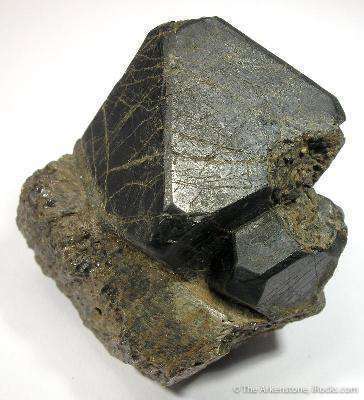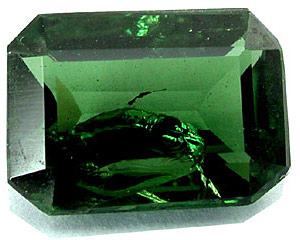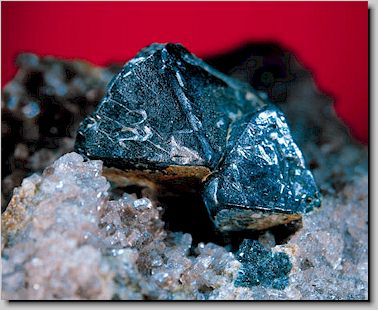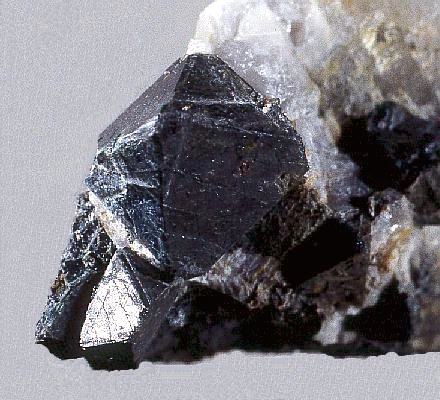Gahnite
Gahnite, interchangeably also known as zinc spinel or Automolit, is a rarely occurring mineral from the mineral class of oxides and hydroxides. It crystallizes in the cubic crystal system with the chemical composition ZnAl2O4 and usually develops octahedral, cubic and rhombendodekaedrische crystals and twins after the octahedron, but also grained mineral aggregates in yellow-brown, blue-green or greenish- black to black in color.
The chemical name for zinc aluminate is gahnite.
Gahnite forms mixed batches with spinel ( MgAl2O4 ) and hercynite ( Fe2 Al2O4 ).
Special Features
Before the blowpipe Gahnite is infusible, and is attacked by either acids or alkalies.
Etymology and history
Gahnite was first discovered in 1807 in the mine of Falun (Sweden) grown in the talc schist. Johann Paul Karl von Moll described the mineral in the same year and named it after the Swedish chemist and discoverer of the element manganese Johan Gottlieb Gahn ( 1745-1818 ).
Classification
In the old ( 8th edition ) and new classification of minerals according to Strunz ( 9th edition ) of gahnite is part of the Department of " oxides with the molar ratio of metal: oxygen = 3: 4" (and similar ). The new Strunz'sche Mineral classification divided here but now more specific on the size of the cations and the mineral is in accordance with the subdivision " with only medium-sized cations ".
The classification of minerals according to Dana assigns the Gahnite also in the class of oxides, here, however, in the subdivision of " multiple oxides with the general formula ( A B2 ) 2X4, spinel group " where he along with spinel, galaxite and hercynite the aluminum subgroup forms.
Modifications and varieties
As Kreittonit (from Greek: κρειττωυ for more ) is called a Gahnitvarietät that one to some other spinels have higher density in relation to their higher iron content.
Education and Locations
Gahnite formed as an ancillary component in igneous or metamorphic rocks such as granites and granitic pegmatites. Accompanying minerals include andradite, calcite, Franklinite, corundum, rhodonite, willemite and many others.
So far Gahnite was at 295 archaeological sites discovered (as of 2009), so among other things, Cordoba and Salta in Argentina; New South Wales, South Australia, Tasmania and Western Australia in Australia; Goiás and some northeastern regions of Brazil; Hubei, Hunan and Liaoning in China; Baden- Württemberg ( Black Forest) and Lower Bavaria in Germany; some regions in Canada; Erongo, Tsumeb and Otjozondjupa in Namibia; Gidan Wayo in Nigeria; Salzburg and Tyrol in Austria; Bohemia and Moravia in the Czech Republic; and at Broken Hill (New South Wales), Franklin and Sterling Hill (New Jersey) and Haddam (Connecticut) in the USA.
Gahnite is also produced synthetically in the zinc production in a muffle furnace.
Crystal structure
Gahnite crystallized in the cubic crystal system in the space group F d3m with the lattice parameters a = 8.0870 Å and eight formula units per unit cell.
Use
Even if Gahnite belongs to the group known as the gemstones spinels and certainly also occurs in clear and transparent varieties, it is rarely used as such. Occasionally he is but honed by experienced collectors in the form of facets.










